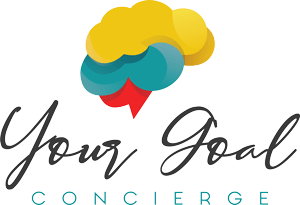How AI Enhances Decision-Making and Strategic Planning
Erica Kesse
The body content of your post goes here. To edit this text, click on it and delete this default text and start typing your own or paste your own from a different source.

CEOs face relentless pressure to be “always on,” but this mindset creates burnout and undermines leadership. Setting boundaries is a powerful way to protect mental health while enhancing team performance. This playbook provides actionable steps for CEOs to establish boundaries, backed by research and tailored for leadership success. The Mental Health Case for Boundaries A 2023 Harvard Business Review study found that 76% of executives report burnout symptoms due to poor work-life boundaries. This not only harms CEOs’ mental health but also cascades to teams, reducing morale and productivity. Boundary-setting is a leadership skill that preserves energy and focus, enabling sustainable success. The Boundary-Setting Playbook Define Your Limits: Identify non-negotiable personal time (e.g., no meetings after 6 PM). Communicate these to your team clearly. Leverage Technology: Use tools like email scheduling or “Do Not Disturb” modes to enforce digital boundaries. Delegate Strategically: Empower your team to handle routine decisions, freeing mental space. A 2021 McKinsey report notes that delegation boosts leader mental health by 25%. Monitor and Adjust: Regularly check in with yourself and your team to ensure boundaries are respected. Adjust as needed to maintain balance. Boundary-setting is a cornerstone of effective CEO leadership and mental health. By defining limits, leveraging tools, and delegating, you model sustainable practices that uplift your team. Start with one boundary this week and track its impact on your well-being.

As a CEO, your leadership sets the tone for your organization’s culture. But are you fostering an environment where employees feel safe to share ideas and concerns? Psychological safety, a critical factor for mental health, is the foundation of high-performing teams. This guide explores how CEOs can model boundaries to create a mentally healthy workplace, backed by research and practical steps. Why Psychological Safety Matters for Mental Health Psychological safety—where employees feel secure to take risks without fear of judgment—directly impacts mental health. A 2015 Google study, Project Aristotle, found that psychological safety was the top predictor of team success, driving innovation and collaboration. For CEOs, fostering this environment starts with intentional leadership. Poor psychological safety leads to stress, disengagement, and higher turnover, costing businesses billions annually, according to Gallup’s 2023 workplace report. How CEOs Can Model Boundaries for Psychological Safety Set Clear Communication Norms: Announce no after-hours emails unless urgent. This signals respect for personal time, reducing employee stress. Lead with Vulnerability: Share your own workload challenges or mental health strategies. A 2022 Deloitte study found that 80% of employees trust leaders who openly discuss mental health. Encourage Feedback: Create anonymous channels for team input, showing that dissent is welcome. Train Managers: Equip leadership teams to recognize burnout and enforce boundaries, reinforcing a culture of care. CEOs who prioritize psychological safety through boundary-setting create workplaces where mental health thrives. By modeling clear boundaries and fostering open communication, you drive innovation and loyalty. Start today by assessing your team’s psychological safety and setting one new boundary.

Effective leadership demands a holistic approach to internal communication, recognizing its multidimensional framework. This system is defined by three distinct flows - Upward, Downward, and Lateral, each serving a specific, vital function that directly impacts productivity and profit. For the CEO, understanding and nurturing the Upward Flow is non-negotiable. Downward: The Direction Flow (Necessary, But Insufficient) Downward communication (from leadership to subordinates) is essential for delegation and distributing information. However, an organization dominated by this top-down approach quickly becomes rigid and unresponsive. True leadership understands that direction must be balanced by receptivity. Upward: The Innovation and Mental Health Flow The Upward Flow is the pulse check of the organization. It's the vital mechanism that allows employees to surface problems, share innovative ideas, and provide crucial feedback. When the CEO and their leadership team actively cultivate and respond to upward communication, two things happen: 1. Innovation: Valuable, ground-level insights are integrated into strategic planning. 2. Mental Health: Employees feel heard, increasing their sense of value and reducing stress, which directly supports their **mental health** and boosts morale. Lateral: The Agility Flow Finally, Lateral communication enables cross-functional collaboration, ensuring departments are aligned on goals. When all three flows are healthy and efficient, the organization operates like a sophisticated nervous system, maximizing its responsiveness and overall vitality. The success of the modern CEO and their leadership team depends on maintaining a strategic balance across all three flows. However, the health and resilience of the entire enterprise hinge on a continuous, valued, and non-negotiable stream of communication flowing up the hierarchy.
